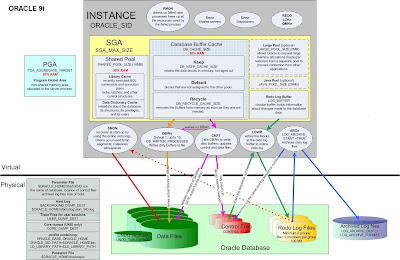Comparison Operators;
Logical Operator;
Using the Logical Operator, AND;
Using the logical Operator, OR;
Using the Logical Operator, NOT;
Nesting Logical Operators;
Other Comparison Keywords;
Using the Keyword, LIKE;
Using the Keywords, BETWEEN...AND;
Using the Keyword, IN;
Using the Keyword, IS NULL
ORDER BY Clause - Using the ORDER BY Clause
Logical Operators
There are six logical operators in SQL, and after introducing them, we'll see how they're used:
=
| Equal
|
<> or != (see manual)
| Not Equal
|
<
| Less Than
|
>
| Greater Than
|
<=
| Less Than or Equal To
|
>=
| Greater Than or Equal To
|
The WHERE clause is used to specify that only certain rows of the table are displayed, based on the criteria described in that WHERE clause. It is most easily understood by looking at a couple of examples.
If you wanted to see the EMPLOYEEIDNO's of those making at or over $50,000, use the following:
SELECT EMPLOYEEIDNO
FROM EMPLOYEESTATISTICSTABLE
WHERE SALARY >= 50000;
Notice that the >= (greater than or equal to) sign is used, as we wanted to see those who made greater than $50,000, or equal to $50,000, listed together. This displays:
EMPLOYEEIDNO
------------
010
105
152
215
244
The WHERE description, SALARY >= 50000, is known as a condition. The same can be done for text columns:
SELECT EMPLOYEEIDNO
FROM EMPLOYEESTATISTICSTABLE
WHERE POSITION = 'Manager';
This displays the ID Numbers of all Managers. Generally, with text columns, stick to equal to or not equal to conditions, and make sure that any text the appears in the statement is surrounded by single quotes (').
More Complex Conditions: Compound Conditions
The AND operator joins two or more conditions, and displays a row only if that row's data satisfies ALL conditions listed (i.e. all conditions hold true). For example, to display all staff making over $40,000, use:
SELECT EMPLOYEEIDNO
FROM EMPLOYEESTATISTICSTABLE
WHERE SALARY > 40000 AND POSITION = 'Staff';
The OR operator joins two or more conditions, but returns a row if ANY of the conditions listed hold true. To see all those who make less than $40,000 or have less than $10,000 in benefits, listed together, use the following query:
SELECT EMPLOYEEIDNO
FROM EMPLOYEESTATISTICSTABLE
WHERE SALARY <>
AND & OR can be combined, for example:
SELECT EMPLOYEEIDNO
FROM EMPLOYEESTATISTICSTABLE
WHERE POSITION = 'Manager' AND SALARY > 60000 OR BENEFITS > 12000;
First, SQL finds the rows where the salary is greater than $60,000 or the benefits is greaterthan $12,000, then taking this new list of rows, SQL then sees if any of these rows satisfies the condition that the Position column if equal to 'Manager'. Subsequently, SQL only displays this second new list of rows, as the AND operator forces SQL to only display such rows satisfying the Position column condition. Also note that the OR operation is done first.
To generalize this process, SQL performs the OR operation(s) to determine the rows where the OR operation(s) hold true (remember: any one of the conditions is true), then these results are used to compare with the AND conditions, and only display those remaining rows where the conditions joined by the AND operator hold true.
To perform AND's before OR's, like if you wanted to see a list of managers or anyone making a large salary (>$50,000) and a large benefit package (>$10,000), whether he or she is or is not a manager, use parentheses:
SELECT EMPLOYEEIDNO
FROM EMPLOYEESTATISTICSTABLE
WHERE POSITION = 'Manager' OR (SALARY > 50000 AND BENEFIT > 10000);
IN & BETWEEN
An easier method of using compound conditions uses IN or BETWEEN. For example, if you wanted to list all managers and staff:
SELECT EMPLOYEEIDNO
FROM EMPLOYEESTATISTICSTABLE
WHERE POSITION IN ('Manager', 'Staff');
or to list those making greater than or equal to $30,000, but less than or equal to $50,000, use:
SELECT EMPLOYEEIDNO
FROM EMPLOYEESTATISTICSTABLE
WHERE SALARY BETWEEN 30000 AND 50000;
To list everyone not in this range, try:
SELECT EMPLOYEEIDNO
FROM EMPLOYEESTATISTICSTABLE
WHERE SALARY NOT BETWEEN 30000 AND 50000;
Similarly, NOT IN lists all rows excluded from the IN list.
Using LIKE
Look at the EmployeeStatisticsTable, and say you wanted to see all people whose last names started with "L"; try:
SELECT EMPLOYEEIDNO
FROM EMPLOYEEADDRESSTABLE
WHERE LASTNAME LIKE 'L%';


